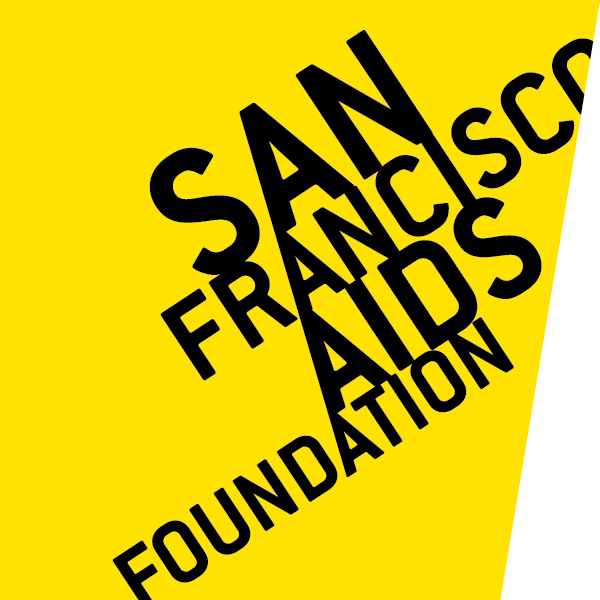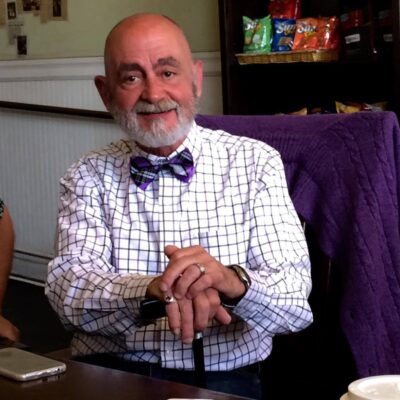Every September 18 since 2008, we have observed National HIV/AIDS & Aging Awareness Day (NHAAD), highlighting the complex issues related to HIV prevention, care, and treatment for aging populations in the United States. The goals of NHAAD are to emphasize the need for prevention, research, and data targeting the aging population and to increase medical understanding of the aging process and its impact on HIV/AIDS, to increase the quality of life for older people living with HIV/AIDS and to reduce stigma surrounding HIV/AIDS among the aging population.
NHAAD is extremely important to the HIV/AIDS community, especially to “the AIDS Generation,” those of us diagnosed before the advent of the HAART “cocktail” of medications. The Center for Disease Control and Prevention estimates that there are 1.2 million people living with HIV in the United States, of whom more than 50% are over the age of fifty; they estimate further that by 2025, that percentage will be closer to 70%; here in San Francisco, it is already 65% or more. We long-term survivors are the largest cohort of PLHIV in the country. People over the age of 50 also account for 17% of new HIV diagnoses and 71% of all deaths of people living with HIV.
And yet — still! — we are “the forgotten majority.” We have been routinely ignored at national and international HIV/AIDS conferences, and we are nowhere to be found in the President’s plan to End the HIV Epidemic. At AIDS 2020 (Virtual), there were over 100 hours of presentations and workshops but only two 1-hour sessions regarding us long-term survivors. Similarly, in July 2021, the US PLHIV Caucus released Demanding Better: An HIV Federal Policy Agenda by People Living with HIV — which also ignores the needs of those of us who have lived with the virus for 30, 35, or more years.
It is egregiously wrong-headed to think that the needs of a 68-year-old man who has lived with HIV for 32 years are the same as a 23-year-old newly diagnosed with HIV. And yet research into the intersection of HIV and aging has been scant. It is a field of inquiry that no one ever imagined until just a handful of years ago when the medical community seemed to awaken to the fact that we HIV-positive folks didn’t all die in the 1980s and ‘90s.
What we do know from preliminary research into HIV and aging is quite alarming. According to the U.S. government’s website HIV.gov, while effective antiretroviral medications have greatly lengthened life expectancy for those of us who are HIV-positive, “HIV appears to increase the risk for several age-associated diseases,” such as cardiovascular diseases (partially due to changes in lipid profiles caused by some HIV medications), lymphoma, type 2 diabetes, lung diseases, cognitive difficulties (such as memory problems, loss of brain volume), and certain cancers.
People with HIV have a higher-than-average risk of osteoporosis and fractures. Many of us are more prone to kidney failure due to enhanced susceptibility to infections such as hepatitis B and C. Polypathology (a combination of two or more of these conditions) can and does occur in the HIV-negative population, of course, but according to a July 12, 2016 article in VeryWell magazine, it seems to occur in HIV-positive folks some fifteen years earlier than in the general population, with symptoms of polypathology beginning at age forty instead of fifty-five.
According to that article, “It may seem strange to read that an HIV infection can cause premature aging, but it seems to be true. Furthermore, premature aging isn’t simply a matter of HIV causing a series of symptoms that are usually found in older adults. Instead, the overall health of individuals with even well-controlled HIV infections is similar to that of people without HIV who are approximately 15 years older.”
For us long-term survivors, sixty-five is the new eighty.
Complicating matters, physicians are sometimes in the dark about treating long-term survivors of HIV/AIDS. They do not routine test older folks for HIV, and they are less likely to discuss sex or drug use with older adults. There is a real dearth of gerontologists and geriatricians who know how to treat patients with HIV; similarly, there is a dearth of psychiatrists and psychologists who are equipped to deal with the depression and PTSD (“AIDS Survivor Syndrome”) that afflict people aging with HIV.
On a personal level, of all the unintended consequences of surviving AIDS, this accelerated aging and its debilitating effects have been the most challenging for me to deal with. I’ve defeated the isolation and loneliness that haunts us survivors by becoming active with social groups here in San Francisco, such as SFAF’s Elizabeth Taylor 50-Plus Network and the Shanti Project’s Honoring Our Experience. I have come to grips with my grief over losing dozens of friends, wrestled it to the ground, and pummeled it into submission. Aging may have brought me some level of wisdom (debatable), but it has also brought me — as it has brought innumerable other survivors — debilitating pain, great expense, PTSD, and the humiliation of premature aging.
Not that long ago — although it seems a lifetime away — I was a very active, respected wrestler and amateur wrestler — I have a championship belt hanging on my wall that I won in an eight-man MMA tournament in 2001 at age forty-eight. Today, my bones are so brittle and fragile that I cannot lift or carry anything weighing more than a few pounds. I am forced to unlearn decades-old habits, like…bending over. Not long ago, I bent over to tug the corner of a fitted sheet onto my bed’s mattress and caused my fifth compression fracture in my spine in less than two years. Having developed balance problems, I fell in 2017 and fractured my pelvis, putting me in a wheelchair with constant pain.
From ten years ago, when my height was last measured at the DMV, to today, I have shrunk from 5’8” tall to 5’4”. My used-to-be very strong legs — once powerful from more than thirty years of hiking up and down the hills of San Francisco — have weakened so much that I cannot climb steps without assistance. Adding to my humiliation, my husband Rick has had to take sole responsibility for household chores that, for many years, either I did exclusively or we shared—grocery shopping; laundry; house-cleaning; making the bed. In short, I have become as close to “useless” as a functioning human being can get short of being an invalid.
Bette Davis was right. Growing old ain’t for sissies!
Fortunately, here in San Francisco we long-term survivors have access to the world’s best healthcare opportunities designed for us. The Golden Compass program as Zuckerberg San Francisco General Hospital is the first unit in the country dedicated specifically to meeting the physical and mental healthcare needs of long-term survivors. The Honoring Our Experience group at the Shanti Project and the Elizabeth Taylor 50-Plus Network provide myriad opportunities for long-term survivors to gather and to thrive together. Because of the efforts of these organizations, long-term survivors of HIV/AIDS in San Francisco are leading the kind of rewarding, satisfying, productive lives we all deserve.
I wish other long-term survivors nationwide were so lucky.
This NHAAD, I hope you’ll reach out to the long-term HIV/AIDS survivors in your circle of friends and let them know that you see them, that you acknowledge the trauma they have endured, and that you recognize their unique physical, mental, and emotional health needs. Show them that you are aware.










